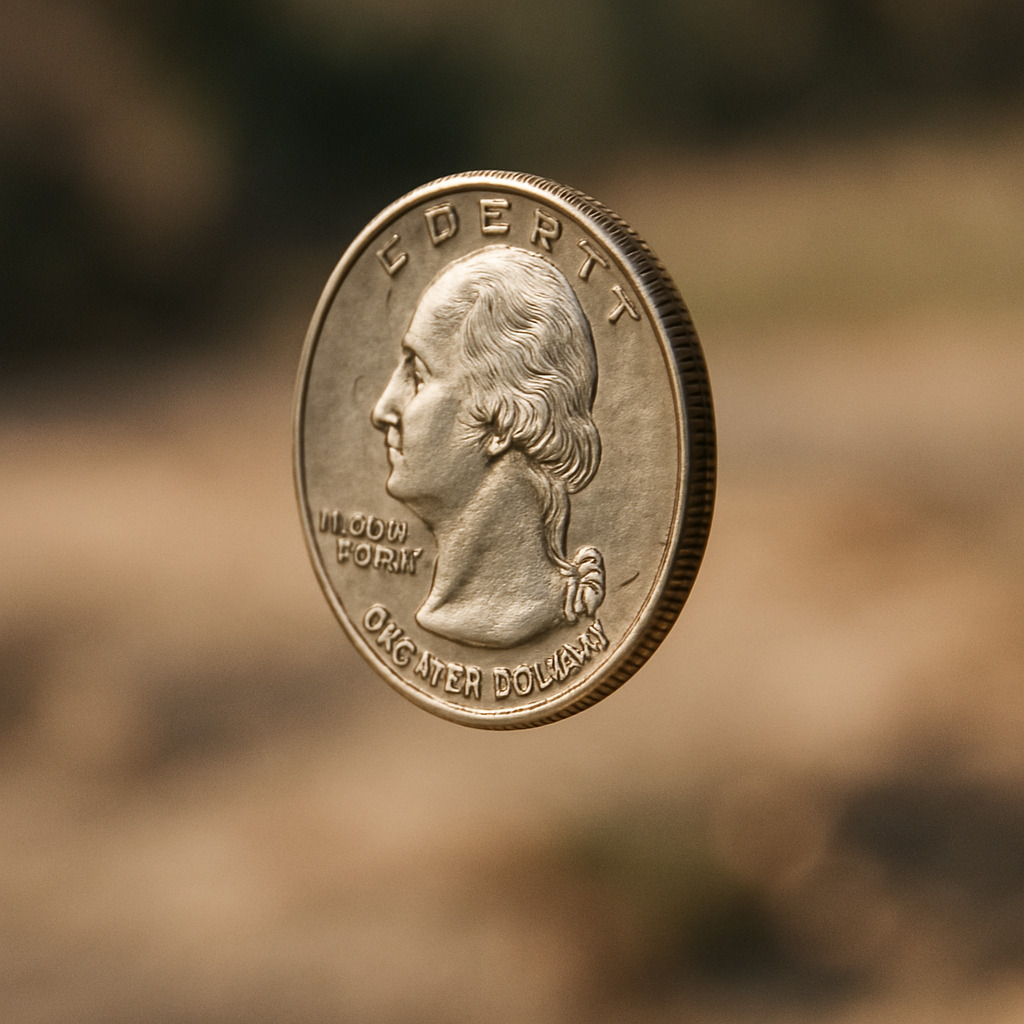Have you ever felt certain a basketball player would make their next shot after a hot hand streak? Or doubled down on a stock because it “seemed” lucky? This belief is called the hot hand fallacy mental model, a model where we think past success predicts future outcomes. Researchers first spotted this in basketball, where fans and players alike assume a “hot hand” streak means more wins are coming.
Imagine a player scores three times in a row. Crowds cheer louder, expecting a fourth. But data often shows each shot is independent—like flipping a coin. The excitement? It’s our brains tricking us into seeing patterns where none exist, illustrating the gambler fallacy in action.
This thinking isn’t just in sports. Ever kept playing a slot machine after a small win? Or hired someone because they aced one project? We treat random wins as skill or luck that’ll last, falling prey to cognitive biases. It’s why casinos thrive and why investors sometimes make risky bets based on the hot hand phenomenon.
While early studies dismissed the idea of real “hot streaks,” newer analyses, including work by Miller and Sanjurjo, suggest streaks might exist in certain contexts. But most times? It’s our minds craving order in chaos, questioning the truth law of probability.
Key Takeaways
- The hot hand fallacy mental model originated from basketball research in the 1980s
- Makes us believe random successes are predictable patterns, illustrating the hot hand fallacy
- Impacts decisions in sports, investing, and everyday life due to cognitive biases
- Modern studies, including those by Miller and Sanjurjo, show mixed results about its validity
- Recognizing the hot hand phenomenon helps avoid costly assumptions
Introduction to the Hot Hand Concept

Ever bet on a coin flip because it landed heads three times in a row? That’s the hot hand phenomenon at work—a belief that short-term streaks, often referred to as “hot hands,” predict future outcomes.
Think of it like assuming a basketball player will nail their next shot after scoring twice, which ties into the gambler fallacy. Our brains love connecting dots, even when randomness is the real artist, challenging the truth law of probability.
Seeing Order in Chaos
Haven’t we all felt that rush when luck seems to “stick”? Maybe you kept playing a game after a small win or bought stock because it rose for three days. These moments reveal how we misinterpret chance as skill or lasting momentum, a common example of the hot hand fallacy.
Early researchers found basketball fans often overestimated players’ consistency, ignoring how each shot stands alone, which raises questions about the truth law of probability.
Beyond the Court
This thinking isn’t just about sports. Ever hired someone because they crushed one project? Or stayed at a slot machine hoping for another payout? We apply the same logic to careers, finances, and even relationships.
While newer studies suggest that the hot hand fallacy might lead people to believe in streaks might exist in specific scenarios, most times? It’s our minds craving certainty in a world full of dice rolls, questioning the truth law of probability.
From Basketball to Behavioral Science

Ever convinced your favorite team was “due” for a win after a few losses? That instinct—to see momentum where none exists—fueled one of psychology’s most heated debates about the hot hand fallacy. Let’s rewind to 1985, when three researchers conducted a study that changed how we view streaks forever, providing evidence that challenges the truth law of probability.
1985 Gilovich, Tversky, and Vallone Study
Thomas Gilovich, Amos Tversky, and Robert Vallone analyzed thousands of basketball shots. Their conclusion? Making three in a row didn’t boost a player’s next-shot odds. Like flipping a coin, each attempt stood alone.
Fans and players felt the heat, but cold, hard numbers said otherwise. This is a classic example of the hot hand bias, where people perceive a streak as a fact despite the evidence suggesting otherwise.
This study became a landmark. It suggested we’re wired to invent stories from randomness—like seeing faces in clouds. For decades, scientists shrugged off the “hot hand” as pure myth, often overlooking the truth law small that governs such phenomena.
Miller & Sanjurjo’s Reanalysis
Then came 2018. Economists Joshua Miller and Adam Sanjurjo spotted a flaw in earlier methods. Imagine flipping a coin four times. If you only look at streaks after three heads, you’d miss the bigger picture. That’s what happened in 1985—they’d filtered data too narrowly, leading to a misunderstanding of the hot hand bias.
Correcting this, Miller and Sanjurjo found mild evidence of streaks in sports, providing an explanation that challenges the gambler fallacy. Not earth-shattering, but enough to say: Maybe we’re not totally fooling ourselves.
Today, the debate continues. Some say streaks are real but rare, while others argue it’s still chance in a fancy jersey. Either way, it reminds us: Data can surprise, especially when we ask better questions about the results.
Foundations in the Hot Hand in Basketball

Picture this: Your favorite player sinks three shots in a row. The crowd erupts, convinced the next one’s a sure thing. This belief—that momentum guarantees success—fuels the hot hand fallacy in sports. But what happens when we check the stats?
Testing The Hot Hand Fallacy Mental Model
Take free throws. Researchers tracked players attempting multiple shots in a row. If someone made five straight, fans expected a sixth. Yet studies showed each attempt had nearly identical success rates—like flipping a coin repeatedly. The “hot hand” feeling? Often just random clustering, a fact that contradicts the gambler fallacy.
Field goals tell the same story. Even star players’ shooting percentages after three consecutive baskets rarely differed from their averages. One analysis found a player hitting three in a row had a 48% chance on the next shot—compared to their usual 49%. This evidence suggests that momentum is less likely to impact results than people believe, hardly proof of unstoppable momentum.
Why do we cling to the idea? Our brains struggle with randomness. A player missing twice then scoring twice feels like a comeback, not chance. As one coach joked, “Fans see patterns; I see math.” This highlights the level of misunderstanding surrounding the hot hand basketball phenomenon.
Next time you witness a “he’s on fire!” moment, remember: streaks might feel real, but numbers often whisper a different truth.
Hot Hand Fallacy Mental Model Explained
Ever bought a lottery ticket because someone nearby won? That urge to chase streaks is the hot hand fallacy mental model in action. It’s our brain’s way of connecting unrelated wins, assuming past success boosts future odds. But here’s the twist: life isn’t always a basketball game. The reason people fall for this is tied to the level of misunderstanding surrounding the hot hand.
Let’s break it down. If a coin lands heads five times, many think tails is “due.” In reality? The next flip still has a 50/50 chance. This mismatch between what we feel and what’s true fuels poor decisions—like betting more after a lucky streak or overtrusting a stock’s “hot” run. This is similar to the gambler fallacy, where results are perceived as less likely to repeat.
| Situation | Perceived Chance | Actual Probability |
|---|---|---|
| Coin after 5 heads | 70% tails | 50% tails |
| Roulette after 3 reds | 65% black | 47.4% black |
| Free throws (3 makes) | 80% next make | 75%* (career avg) |
*NBA players’ actual free-throw averages
Why do we get it wrong? Small samples trick us. Seeing three wins in a row feels special, but it’s like spotting shapes in clouds—randomness in disguise. As experts note, this mental shortcut works against us in investing and daily choices.
Next time you spot a “streak,” ask: Is this skill… or just luck’s day off? Numbers often tell a quieter story than our excited brains.
Cognitive Biases Behind Winning Streaks

Why does a coin landing heads five times feel significant? Our brains evolved to spot patterns—even when they don’t exist. This raises a question for many people: how do biases like the hot hand and the gambler’s fallacy affect our perception of results? Three key biases trick us into seeing meaning in randomness:
Streak Seekers vs. Streak Deniers
The hot hand fallacy and gambler’s fallacy are two sides of the same coin. With the hot hand, we expect a basketball player to make their fourth shot after three successes. With the gambler’s fallacy, we bet on black after five red spins, thinking “it’s due.” Both errors stem from misreading chance.
| Situation | Bias | What We Think | Reality |
|---|---|---|---|
| 4th free throw attempt | Hot Hand | “They’re unstoppable!” | Same success rate as always |
| Roulette after 5 reds | Gambler’s Fallacy | “Black has to come up” | 47.4% black chance |
Memory’s Magic Trick
Confirmation bias makes us remember three wins but forget ten losses. The clustering illusion convinces us that random groupings (like HHTHT) contain “meaningful” sequences. Researchers found fans recall Steph Curry’s hot streaks but overlook his 0-for-5 nights.
Why do smart people make these mistakes? Our ancestors survived by assuming rustling leaves meant predators—not wind. Today, that same instinct makes us see stock market “trends” in random fluctuations. It’s not stupidity—it’s how we’re wired.
Next time you spot a pattern, ask: Am I connecting real dots… or imaginary ones?
Statistical Analysis & the Hot Hand Artifact

What if a simple coin toss could explain why we see patterns everywhere? Let’s flip one ten times. If you get heads three times in a row, does that mean the next toss is “due” for tails? Nope—each flip stays 50/50. This statistical illusion explains why even experts misread streaks.
When Coins Trick Us
Imagine tossing a coin five times: H-H-H-T-T. Most people would call three heads a “streak.” But if you look closer, there’s also a substreak—two tails at the end. Early researchers, including Miller Sanjurjo, focused only on long sequences, missing these smaller patterns. This led them to dismiss real trends as random noise, raising the question of the hot hand fact at this level.
| Scenario | Full Streak | Substreak |
|---|---|---|
| 10 Tosses | HHHHHTTTTT | HHH within HHHHHTTTTT |
| Detection Rate | Easily noticed | Often overlooked |
Math’s Sneaky Surprise
Miller & Sanjurjo showed why past studies got it wrong. If you only check for streaks after three wins, you ignore shorter runs that matter. Their 2019 study proved that even fair coins create clusters. For example, in 100 tosses, you’ll likely see 5-7 heads in a row—not magic, just math.
This ties into the clustering illusion, where our brains spot false groupings. Next time you see a “hot streak,” ask: Is this a full story or just a chapter? Proper analysis keeps us from betting the farm on lucky flips.
Classic Studies with Modern Data

What if your eyes saw more than the numbers? For decades, scientists dismissed streaks as imaginary—until fresh analysis tools revealed hidden truths. Let’s explore how modern methods are rewriting old conclusions.
Power Analysis and Study Limitations
Early research on streaks faced a critical issue: small sample sizes. Imagine trying to study weather patterns with only a week’s data. Original basketball studies tracked a few hundred shots—enough to spot obvious patterns but miss subtle trends. Modern power analyses show those samples were 20-50% too small to detect real streaks.
Here’s where older studies stumbled:
| Factor | 1980s Approach | Modern Approach |
|---|---|---|
| Sample Size | 200-500 events | 10,000+ events |
| Streak Detection | Basic counting | Markov chain models |
| Context Analysis | Ignored defense pressure | Considers opponent strength |
Miller and Sanjurjo’s 2018 reanalysis cracked the code. By examining sequences within sequences, they found short bursts of above-average performance in sports data, highlighting the concept of the hot hand. A player hitting three shots might actually have a 5-7% higher chance on the fourth—if defenses ease up or confidence spikes, a phenomenon that many people often overlook.
But there’s a catch. Even updated methods struggle with randomness. As one statistician joked, “The hotter the hand, the colder the math.” While new tools reveal glimpses of patterns, most streaks still blend skill and luck in ways that defy simple explanations, as shown in the table comparing older and modern approaches.
So what’s the takeaway? Older studies weren’t wrong—just incomplete. Like upgrading from binoculars to telescopes, better data lets us see further at a new level of understanding. Next time you spot a streak, ask: Is this noise… or a signal we’re finally learning to read?
Hot Hand Effects in Sports, Gambling, and Investing
Three green days in the stock market can feel like a winning streak. This illusion of momentum isn’t limited to courts or casinos—it shapes decisions everywhere. Let’s explore how this pattern-seeking behavior plays out in unexpected places.
Casino Chips and Stock Tips
Slot machine players often increase bets after small wins, convinced another payout is coming. A 2020 study tracked 5,000 casino sessions and found players bet 23% more following two consecutive wins. Similarly, stock traders tend to buy assets after short rallies, assuming the trend will hold. Yale researchers analyzed brokerage data and found investors overestimated continuation by 40% compared to actual results.
| Activity | Perceived Pattern | Reality Check |
|---|---|---|
| Roulette (3 reds) | “Black is next!” | 47.4% black chance |
| Stock (3 up days) | “Momentum building” | 52% continue rising* |
*Based on S&P 500 data 2010-2020
Miller and Sanjurjo’s work shows why these beliefs persist. Their analysis of poker tournaments revealed players with early wins took 18% riskier bets, even when chip counts didn’t justify it. The brain treats a few successes as proof of lasting advantage.
Ever doubled down on a stock after two good days? You’re not alone. Our minds weave stories from randomness, whether we’re holding dice or dividend reports. As one trader quipped, “The only thing hotter than a streak is our belief in it.”
Cultural Impact and Misconceptions

Ever heard a commentator declare a player “unconscious” after three good plays? Media narratives love turning brief successes into legends. Movies like Any Given Sunday show athletes “finding their rhythm,” while sports analysts hype “momentum shifts” during broadcasts.
But what’s real—and what’s just a good story? This is where the concept of the hot hand comes into play, influencing how people perceive success.
Consider how we describe streaks. A basketball player hits four shots, and suddenly they’re “on fire.” Yet data shows their fifth attempt succeeds at the same rate as always. This gap between storytelling and stats appears everywhere—from poker tournaments edited to highlight “lucky runs” to financial news framing random market jumps as “trends.” The work of Miller and Sanjurjo highlights how these misconceptions can affect decision-making at every level.
| Media Portrayal | Reality Check | Why It Matters |
|---|---|---|
| “They can’t miss!” | Next shot: 48% success | Creates false expectations |
| “Investor on a roll” | 3 wins in 10 trades | Hides overall performance |
Why do these tales stick? Our brains prefer exciting stories over messy truths. You’ve likely done it too—like assuming a coworker’s two great presentations mean they’ll ace the third. But as researchers explain, most streaks are random clusters, not skill.
Next time you spot a “red-hot” moment, ask: Am I watching facts… or folklore? Separating myth from math helps us see the game—and life—more clearly.
Strategies for Avoiding the Hot Hand Fallacy

Ever doubled down on a choice because things went well twice? Our brains love chasing streaks, but smart decisions need cooler heads. Let’s explore simple ways to spot randomness and make clearer choices.
Zoom Out Before Jumping In
Three wins in a row feels special. But what about the last 20 tries? A recent behavioral study found people who reviewed 50+ data points made 40% fewer streak-based errors. Next time you see a “hot streak,” ask: Is this a full story or just a lucky chapter?
Play Pattern Detective
Randomness loves disguises. That coworker who aced two projects? Check their full track record. Casinos profit because we see “trends” in slot machine spins—sequences that are really just dice rolls in fancy clothes.
| Situation | Mistaken Approach | Better Strategy |
|---|---|---|
| Stock rises 3 days | “Buy now—momentum!” | Check 6-month performance |
| Player scores twice | “Pass them the ball!” | Review season averages |
| Slot machine pays | “Keep feeding coins” | Track 100+ spin results |
See a pattern? Test it. Flip a coin 10 times—you’ll likely get 3 heads in a row. Now try 100 flips at the table. Those “streaks” blend into the noise. Real skill shows consistency, not lucky clusters, which many people often mistake for the hot hand.
Our takeaway? Treat short-term wins like weather—enjoy sunbreaks but pack an umbrella. Lasting success comes from steady habits, not chasing rainbows, as highlighted by Miller Sanjurjo’s insights on the level of randomness in outcomes.
Conclusion
The hot hand fallacy mental model: Decades of research show how easily we confuse short-term luck with lasting skill—from basketball courts to stock markets.
The 1985 study declaring streaks imaginary gave way to nuanced findings: while rare clusters exist, most “hot hands” remain mirages in our pattern-hungry minds. This “hot hand” phenomenon raises the question of how many people truly understand its implications.
Key lessons stand firm. Early work by Gilovich and Tversky revealed our tendency to invent narratives. Modern updates, like Miller Sanjurjo’s 2018 analysis, remind us that better tools can uncover subtle truths. Yet data consistently warns: three wins don’t guarantee a fourth at any level.
Guarding against this bias starts with simple habits. Check long-term trends at the table, not just recent results. Ask if numbers support the story—or if excitement’s filling gaps. Baseball’s 12-year batting analysis proves streaks can happen, but they’re exceptions, not rules.
Ready to see life’s dice rolls more clearly? Next time you spot a streak, pause. Ask: “Will I trust the moment… or the math?” Truth often hides where noise meets numbers.


